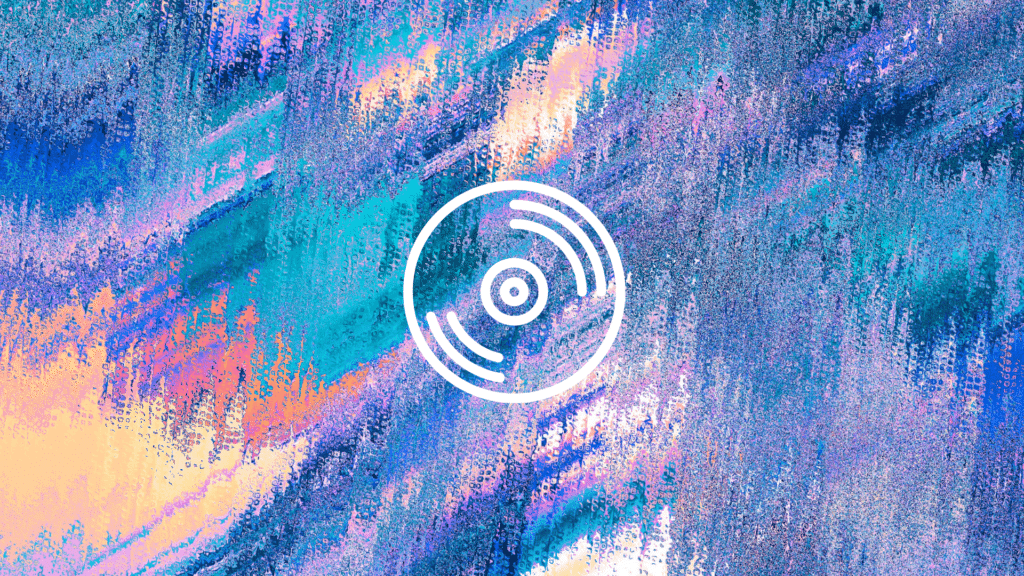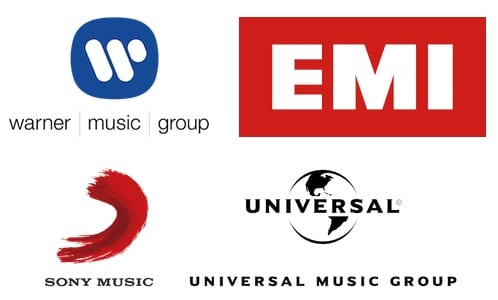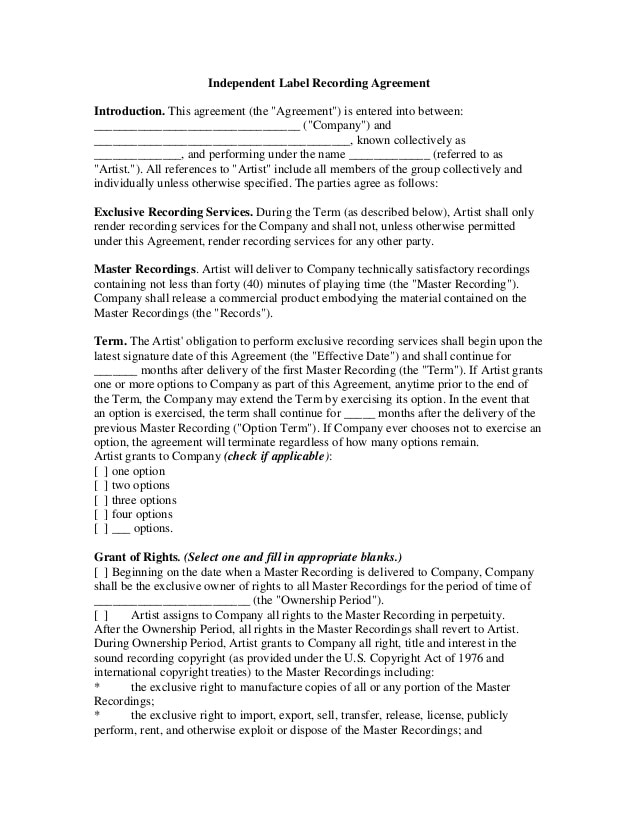How to get signed to a record label? This is a common dream for all genres of music producers.
However, the whole process of getting signed to one seems complicated. And if you go in uninformed, you could be paying the price of a bad record deal.
So what do you need to know about labels – both the good and the bad?
In this guide, we’ll cover:
- the different types of record labels (and which ones you should avoid)
- the process of submitting demos and how to get signed
- do’s and don’ts when you’re signing a contract
- what to consider for your long-term career
- other tips & tricks for dealing with labels
So no more hesitation – let’s get straight into it 👇
New to music production? 🧑💻
Watch our Free Masterclass on how to learn electronic music production the smart way (without months of confusion & frustration) 👇
Table of contents
So, What Is A Record Label?
A record label is a company/brand that commercially releases music to the market (and in the ideal world, would make a profit doing so).
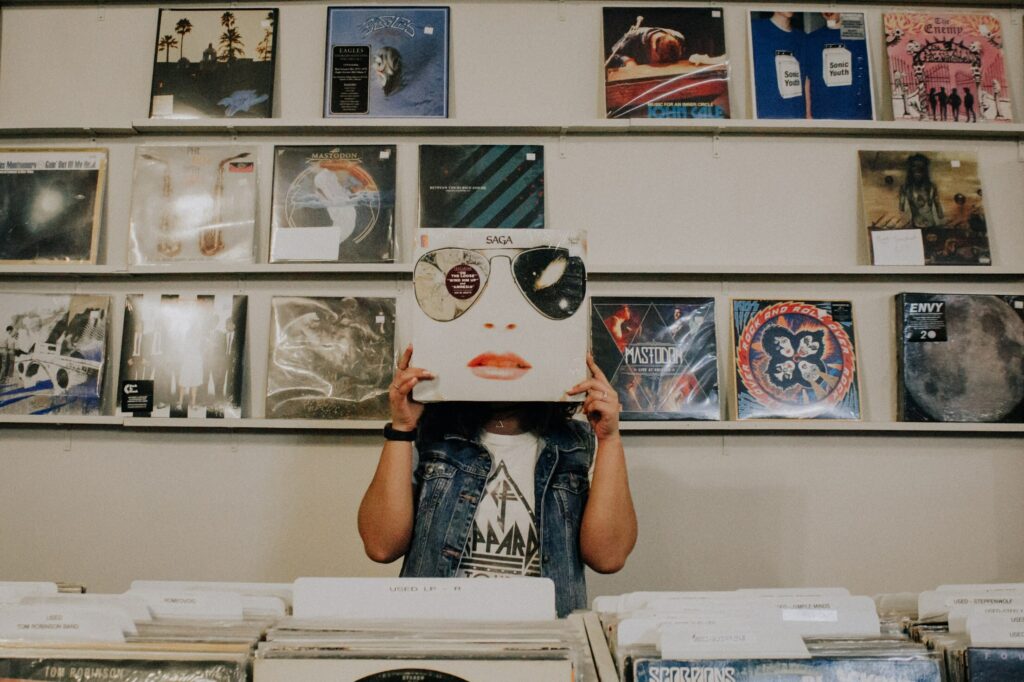
How do they do this?
- They decide on a vision, strategy, brand, and sound for the label
- Artists who align with that are sought out
- Deals are made with the artist for their music via a contract
- The label releases the artist’s music on behalf of them, distributing it to outlets (digital and/or physical) and providing artwork, and representing the music
- They promote the release with their connections & expertise
- Royalties for the master are collected by the label and paid to the artist
This is a simplified version, but no matter the structure of the label, it will use a variation of the above.
Based on the above, it’s quite often that a record label can be the ‘representative’ of an artist, especially in 360 deals (which we’ll cover soon). However, this is often not the case.
Labels In The Digital Age
In electronic music particularly, labels operate more as collectives of artists – joining together to push a certain sound forward.
This is in contrast to the traditional model of a label where they act as a wholistic business, providing services like accounting, ongoing marketing, their own producers for your music, and much more.
As a result, labels these days are a lot leaner, with many opting to remove unnecessary activities like physical distribution, long-term contracts, and artist control from their strategy.
This means usually that no CDs or vinyl are created, and the whole process around that is eliminated.
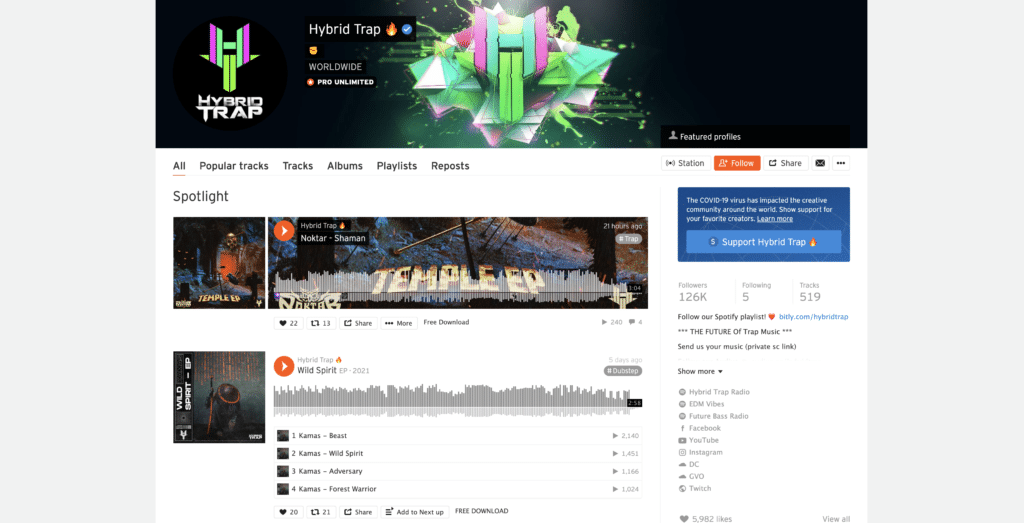
Some examples of digital labels include Strange Fruits, Lane 8’s This Never Happened, and Hybrid Trap. Even if these labels occasionally offer a vinyl release, their focus is primarily digital.
To dive in a bit deeper, let’s take at the types of labels and deals out there.
The Types of Labels & Record Deals
When most producers come to me about label advice, they’re afraid of the power and control the label could have over them.
This is usually not how things play out, but it’s a fair concern.
To help understand these situations more, you need to understand the different types of record deals and label models that exist in the world. This will help understand how to get signed to a record label.
Label Types
There are 3 categories most labels fall into (Major, Subsidiary and Independent), but I’ve added split independents into two for clarity:
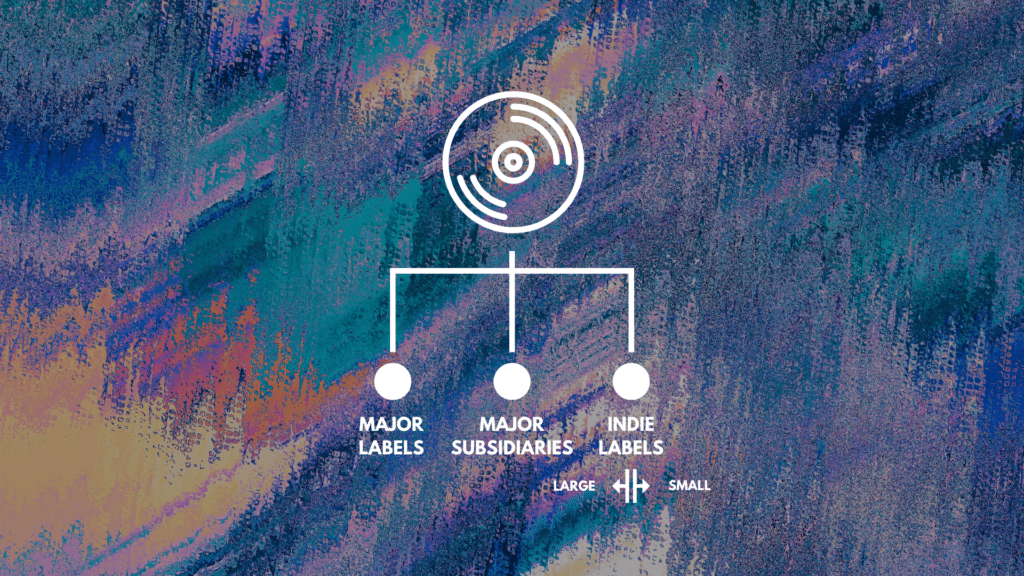
Major Labels
This refers to the big 4 of the music industry, otherwise known as Sony, EMI, Warner, and Universal.
Traditionally, these labels engage in 360 Deals (more on this soon) and have a lot of control over the artist’s career.
Although it’s many an artist’s dream to release on a major label, oftentimes people lose a lot of control over their careers due to the controlling nature of these labels.
In recent years, these labels have been focused on using subsidiaries to remove any negative brand image from their artists, particularly in electronic music.
In pop, the majors still play a massive role.
Major Label Subsidiary
These record labels appear independent (and maybe once were), but are actually a subsidiary of one of the big 4.
So it’s worth doing your research to know what you’re getting into – even artist-founded labels can eventually get snapped up by the Big 4.
All that being said, subsidiaries are a good balance of marketing prowess while still maintaining the ability to not sell your soul (depending on the label). Usually the owning major doesn’t have as much direct involvement, as long as the subsidiary generates revenue.
Examples: Astralwerks, Big Beat Records, OWSLA, Polydor Records, Parlophone
Large Independent Labels
Although most independent labels would fall into the small category, there are a handful that would be considered large.

These label types are rare because normally they are bought up by the majors, but when they exist they are a powerful force. Large indie labels tend to have a lot more marketing power than smaller indie labels, but also care about the artists more than the majors and subsidiaries.
Examples: Anjunabeats/Anjunadeep, Fool’s Gold Records, Mad Decent, Hospital Records
Small Independent Labels
The most common form of a record label in electronic music – small independent labels are run like small businesses, and a lot of them are run by artists.
They might lack the promotional power of larger labels, but they still can push your music for you, oftentimes more than you can.
When it comes to your artist career, in the early days you’ll likely be dealing with small independent labels, unless you are self-releasing.
Larger indie labels and major subsidiaries are difficult to reach without an existing following, and majors are extremely selective with who they sign.
Don’t be put off by this though – small labels are often great to work with (depending on who it is), and can also teach you a lot about the industry.
As long as you sift through the hundreds and thousands of labels out there – you’ll find one that suits your needs.
However, this all depends on the type of record deal you sign.
Recommended: How to Make a Successful Artist Career in the Music Industry
Record Deal Types
There are many different types of record deals out there. A lot of them fit into the six below categories:
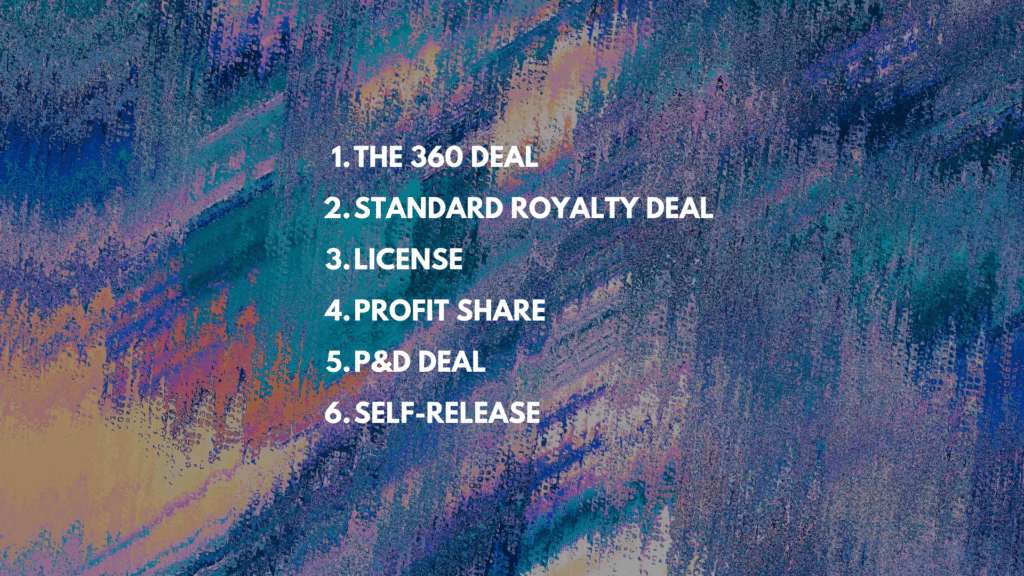
When it comes to electronic dance music, most deals tend to be standard royalty deals or licensing.
Here is a breakdown of each type.
Note: these deal types are referenced from David Byrne’s book ‘How Music Works‘.
The 360 Deal
This model is the typical ‘the label owns you’ record deal. Everything from your marketing, to distribution, to show bookings and more is managed by the one label. This is extremely uncommon in EDM unless you’re signing to one of the majors or some large independents.
Most common with: Major Labels, Major Subsidiaries, Large Independent Labels
Standard Royalty Deal
What most people think of when they think of a ‘record deal’. The label signs your music and will handle all aspects of the manufacturing, marketing, distribution, and promotion of your releases. However, they will not get involved with other career aspects, like live shows, merchandise, interviews, and other activities.
Most common with: Major Subsidiaries, Large Independent Labels, Small Independent Labels
License
This is similar to the above, but the artist retains the master rights to their music. The artist licenses the music to the label for a number of years, after which the royalties come to the artist.
Most common with: Small Independent Labels
Profit Share
This is uncommon these days, but the label and artist agree to go 50/50 (or similar) on everything. The ownership of recordings, royalties, and everything else. This also means that the label and artist share the marketing, promotional, and distribution costs.
The downside to this model is that it requires a lot of admin and doesn’t look all that different from a licensing deal.
Most common with: Small Independent Labels
P&D Deal
The label is only responsible for the distribution of the record and nothing else. The artist retains all ownership and is responsible for the marketing and promotion, as well as literally everything else. Some labels offer P&D deals, but it’s rarer with the rise of services that allow you to self-release efficiently without one.
Most common with: Large Independent Labels, Small Independent Labels
Self-Release
Okay, this isn’t really a type of record deal at all, but I thought I’d mention it as an option. Here you go with no record label or distribution company and you do everything yourself.
Traditionally, self-releasing meant you couldn’t get your music onto major services, but now with platforms like Distrokid and CD Baby (which don’t operate like a label) allow you to do this yourself.
All of these deals can have different parameters, such as lifetime of copyright, which we’ll explore later in the contracts section.
Recommended: Releasing On A Label vs. Going It Alone
The Ownership Problem
I think this is worth mentioning as a lot of people have a negative perspective on a label owning their music.
It’s not as bad as you think.
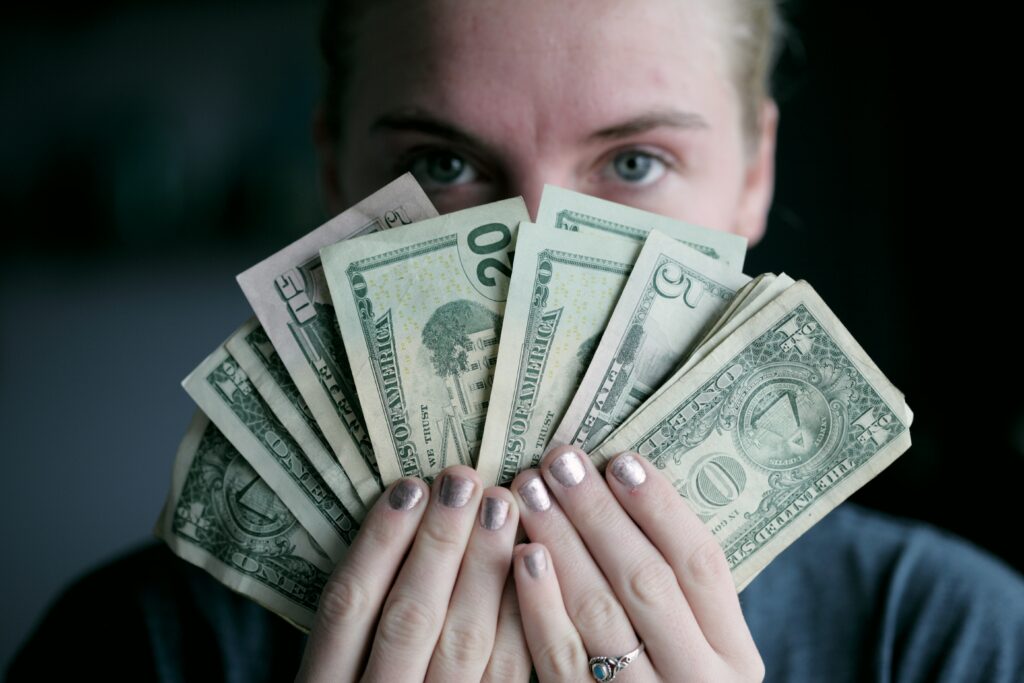
Most labels prefer to own the master copyright as it allows them to exploit it to their maximum potential, whereas it would be more difficult in a licensing or profit share deal.
This does benefit them, but also it benefits you a lot.
An Example
Imagine the following scenario:
You self-release a song via Distrokid.
It does well – it gets picked up in some key playlists on Spotify like Discover Weekly and Release Radar, racking up 100,000 streams.
Here are the earnings for that many streams on each platform:
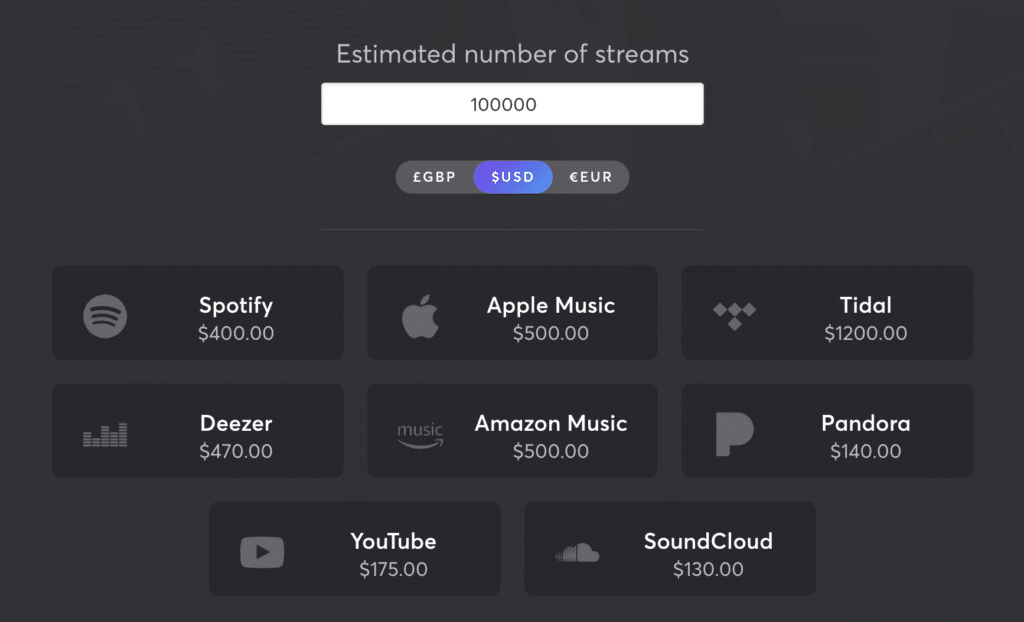
Not bad, right? Especially when you get to keep 100% of the revenue (minus any signup fees with your distributor).
Now imagine this:
You sign the same track to a mid-tier independent label. They ask for a 50/50 royalty split, so you only see half of the streaming revenue instead of 100%.
But through their connections, marketing power and dedicated team, they are able to rack up 500,000 streams.
Look at the numbers.
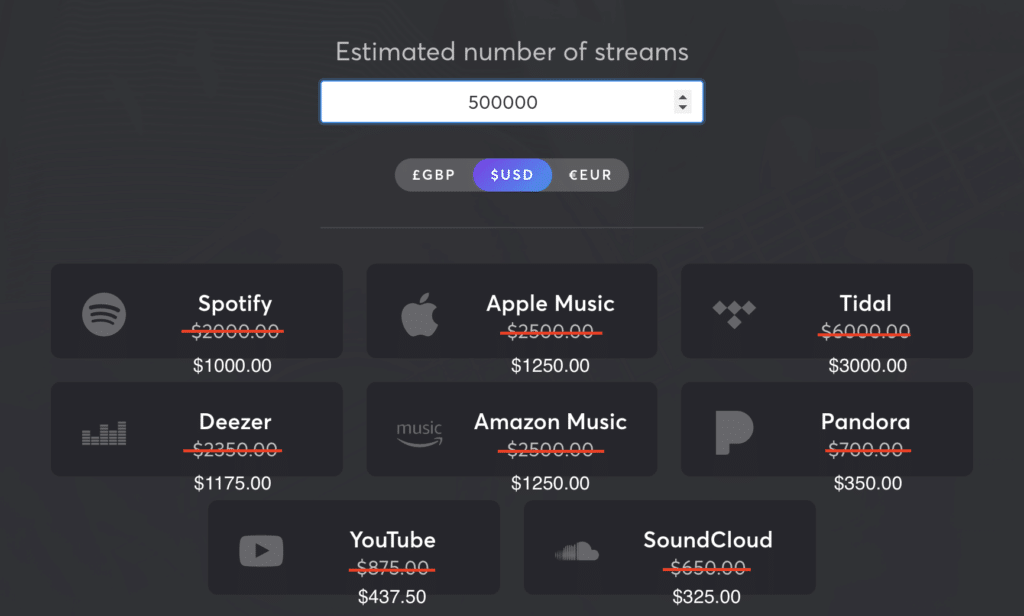
You’re still earning over double what you did via self-releasing.
When a label is freed up to do what they want with your music, they can send it to the right people, generate fans for you, create new opportunities and do a lot more good which helps your career grow.
While I’m personally not a fan of 360 Deals in which the label owns every part of you, I don’t see a problem in letting a label own my music (standard royalty deal) so they can promote it to a much larger audience then I could ever hope to.
Looking to boost your streams on Spotify? Check out our 13 free tips in our latest guide here 🔥
How To Get Signed To A Record Label
As we’ve discovered, ‘getting signed’ isn’t the same thing as ‘signing your life away’.
So how do you go about getting these deals?
Here’s the process:
#1: The Art of Finding A Label
Many artists start too big when trying to sign their first tune. Especially if your music is still not 100% there.
Although I’d advocate first making your music as best as it could be, once it reaches a certain level of quality, you can start sending it to smaller independent labels.
Small independent labels are great because normally they are run by passionate individuals who care about music. They’re also a great opportunity to get acquainted with the process of releasing.
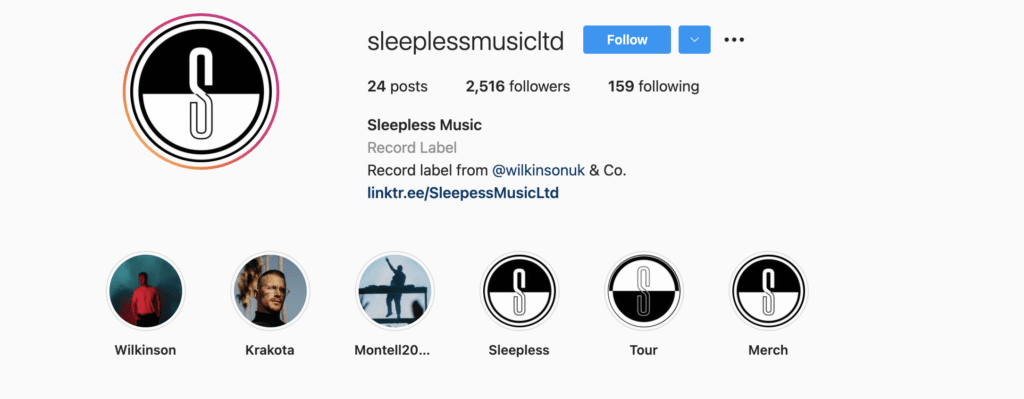
Say you’re a melodic deep house producer and it would be your dream to sign to Anjunadeep. Obviously, you shouldn’t try to get signed to a record label like this at the beginning.
Instead, you should search for smaller labels to release with.
If you don’t know any, here are a few techniques:
- Look at the labels your favourite artists released on in their early days – chances are those labels are looking for upcoming talent
- Listen to a DJ mix or Spotify playlist featuring your style of music. Pay attention to new artist names and any label names that pop up, and do some research.
- Use Google – you’d be surprised what happens when you search what you’re looking for
- Follow blogs, YouTube channels and other promotional channels in your niche that cover your style, as these people normally have their pulse on up-and-comers
- Check out sites like BeatStats which list labels from Beatport for each genre
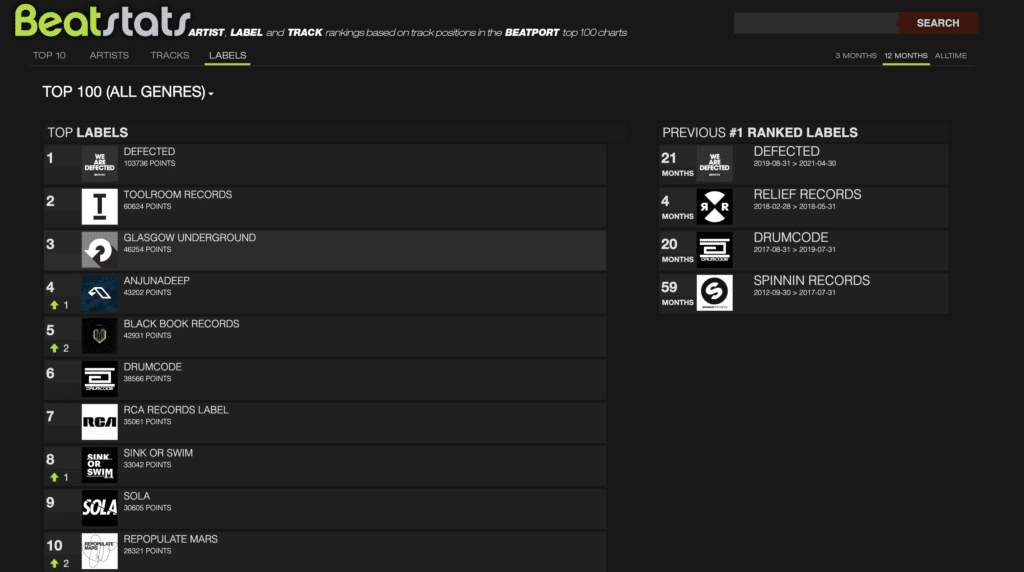
Once you do this, start curating a list of labels you can start sending music to. Check out the linked article at the end of the next on the demo submission process for a more detailed insight into this process.
#2: Submitting Demos: A Brief Introduction
Once you’ve chosen a label, you need to submit your music to them.
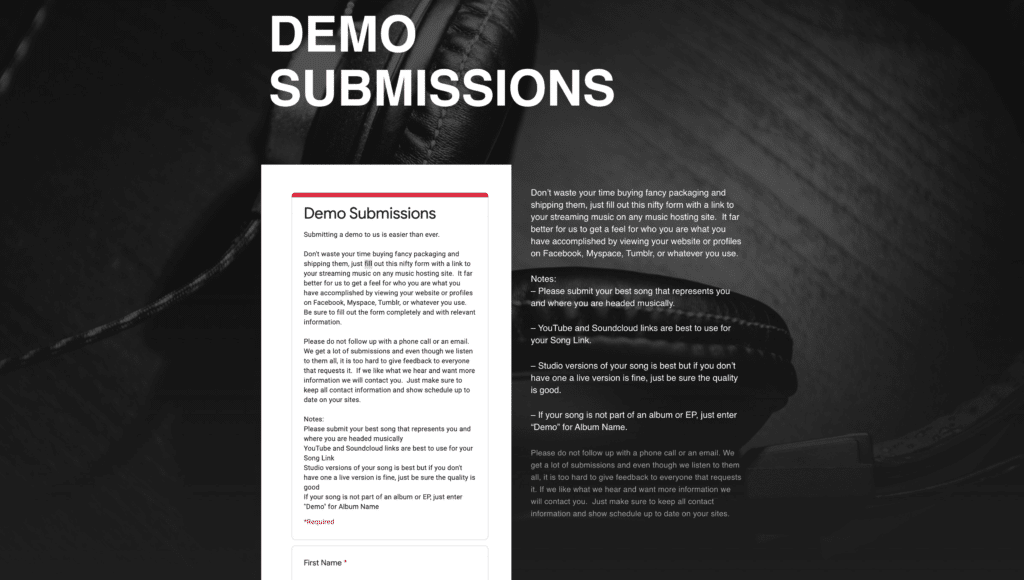
Although this is a process thing in itself, here are a few tips:
- Only submit what aligns with the label’s sound. If you have to second guess, it’s probably not suitable.
- Contact them on their preferred media, not yours.
- Make it easy for the label A&R to listen – make sure links work and that they’re downloadable
For a full rundown on the process of demo submission, check out our guide here. Understanding the proper way to submit demos will boost your chances to get signed to a record label.
#3: How to Get Signed to a Record Label: Navigating Record Label Contracts
Contracts seem scary. But they don’t have to be.
Once you seen a few contracts, you’ll realize a lot of them have similar terms that you can identify. So if you’re yet to see one, note these down.
Here are a few common parts of a contract you’ll come across.
Note: none of this constitutes legal advice. If you’re wanting genuine legal advice, consult a lawyer.
Contract Term
In other words, how long the label is going to own or license the master recording. Normally, this ranges from 7 years all the way up to a lifetime.
Don’t be scared if it says lifetime because this usually means the label is willing to commit to having the tune as part of their catalogue for the long term.
Many labels also have a clause that if the copyright isn’t transferred back by artist request after the contract term, the label will retain it.
Master vs. Publishing Rights
When you produce a song, there are two types of copyright: the recording and the underlying composition.
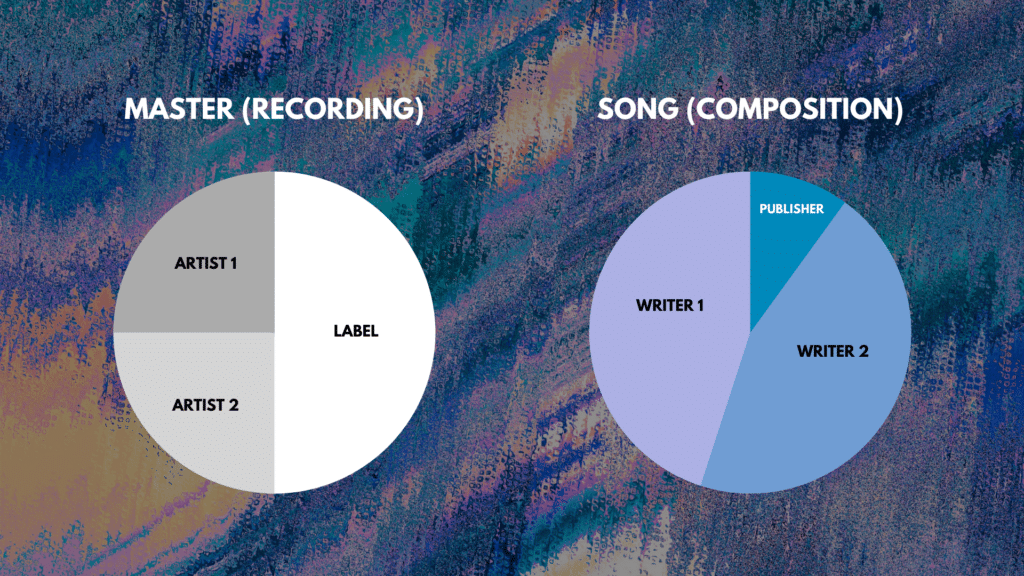
The recording is that audio file that you send to the label, whereas the composition is the actual music itself.
Do you know how you bounce out 100 different versions of the same song throughout the production process? That’s like having 100 different master copyrights, but only 1 compositional one.
Normally, the master is handled by the label, and the publishing by a third-party publisher. Sometimes, the label will also handle publishing, but this is often outside their area of expertise.
Accounting Periods
This is how often the label will update its books and implies how often you will get paid. 6-monthly or 12-monthly accounting is standard, and normally the label will pay within 60-90 days of each date.
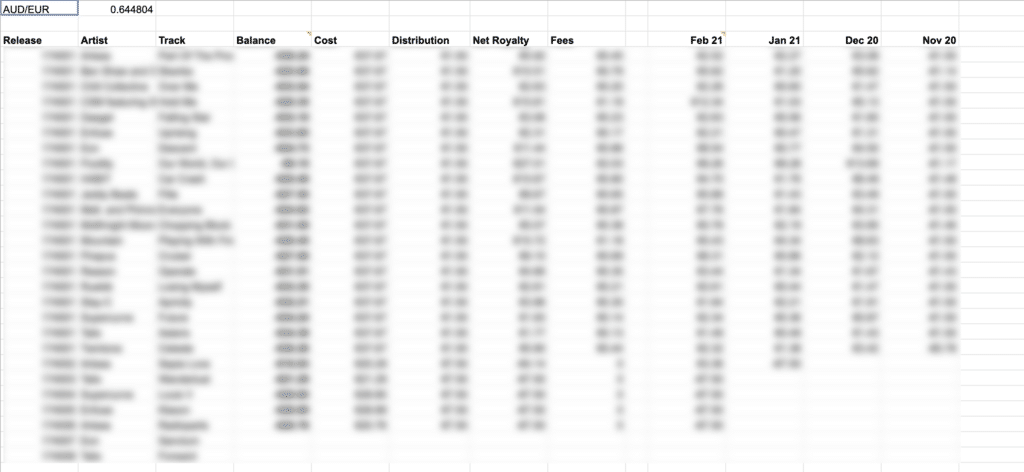
As someone who runs a label, the reason that the payout dates are so few and far between is because stores and platforms pay out on a similar basis, so the effect trickles down.
Royalty Split
The industry standard is either a 60/40 or 50/50 split (label/artist). Some majors and subsidiaries do 70/30.

Often the label will also agree to invest a certain amount into marketing that you have to pay back via royalties (e.g. $100 marketing spend) before you start earning directly.
If you’re agreeing to a different amount (i.e. the label gets more), be skeptical as to why. Are they providing you with an extremely high level of exposure? Are they guaranteeing something that warrants the extra income for them?
Very rarely will you run into something different.
Territory
The countries and areas in the world your music will be commercially released in.
Most contracts simply use ‘Universe’ to describe all countries and territories, meaning your music will be released everywhere worldwide.

Some labels that only cover a specific area exists, but these are rarer. The only benefit is local expertise in terms of promotion and marketing.
Exclusivity
This term will outline whether you are allowed to release the specified tracks through other labels.
Typically, the track you sign will be exclusive to the record label for the whole contract term. This means you can’t go and release it elsewhere unless it’s in a different territory to the current label.
You probably wouldn’t want to do this anyway as it would cause more administrative hassle with collecting royalties. So this is a pretty standard term.
However, some labels may specify complete exclusivity, ‘x’ number of albums, or ‘first preference’ terms which means that the label will release all of your music for the foreseeable future. These are common in 360 Deals.
Try to avoid signing ongoing exclusivity unless you know the label and are willing to go with them on the whole journey.
How to Get Signed to a Record Label: Final Considerations
At this point, you might be excited to get your music out into the world.
However, before you go off and start finding labels to sign to, here are a few things to consider.
#1: Music Comes First
Don’t sacrifice the quality of your music by spending all your time dealing with labels. I spent too many years worrying about sending my crappy music out when I could have been getting better.
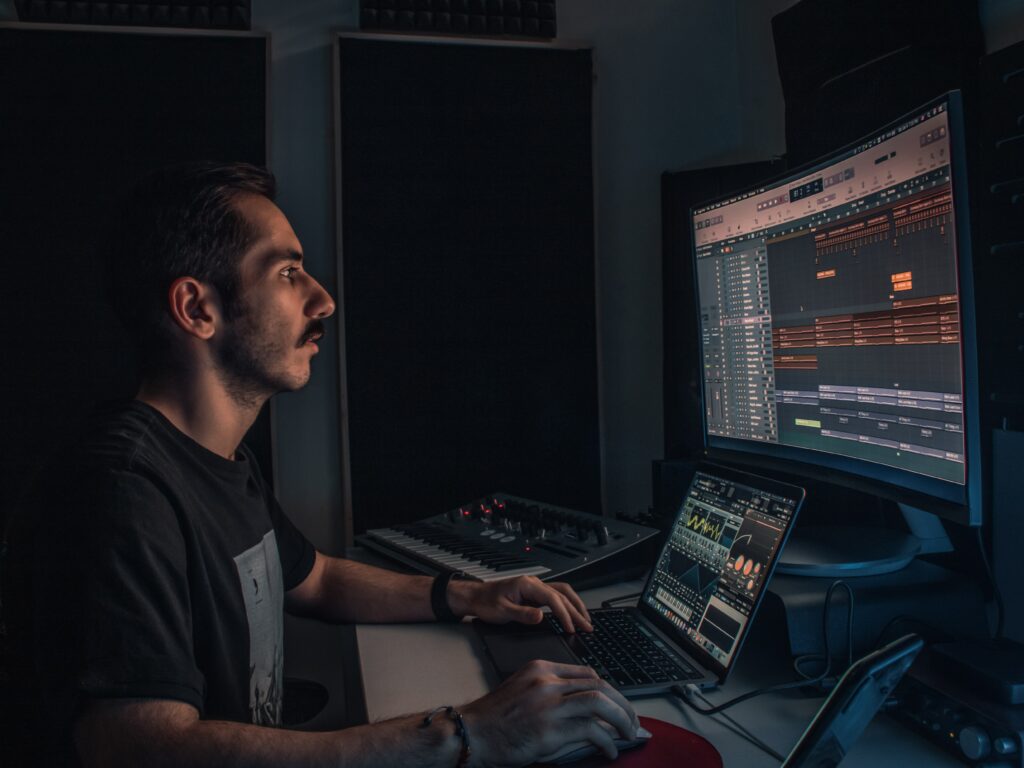
In this case, you have to be brutally honest with how good your music is. If your music isn’t at least 80% as good as the artists who have released on that label, don’t send it.
(I say 80% because quality is often subjective, and sometimes your 80% is somebody else’s 100%.)
#2: Maintain a Social Media Presence
This one is maybe a bit controversial. However, I still think it’s a key component of being an artist in 2024.
Here’s the deal: if you don’t promote your music, no one will hear it.
That’s simply the harsh truth. And in this day and age, social media is the go-to promotion channel.

Now, why is this important for how to get signed to a record label?
Think of it from the record label’s point of view. They are investing time, money, effort and creativity on you. And usually, they expect a return on investment 😅
If they see that you have 4 followers on Instagram and two of them are your parents, that’s a red flag. Or maybe you have a few followers, but you never post anything. Not even for your previous releases. The label might think: “Wait, is this guy even going to talk about our new release…?”
This is especially true if you are planning on releasing on smaller labels.
Oftentimes in that case, both the label and artist share the workload to promote the release. Now, I’m not saying you have to be posting TikToks every few minutes. But you should be trying to engage with your fanbase as much as possible. Here are a few ideas to get you started:
- Share demos, WIPs and unfinished tracks. Ask people what they think of them. These can be super rough, the idea is simply to engage with people.
- Post pictures of yourself making music. These can be a simple as you playing on a MIDI keyboard or holding a guitar.
- Share music you’re vibing to. You can also simply do this in your Stories.
- Post lifestyle pics. The more people know who you are, the more they will listen to your music. Share pictures when you’re on vacation, doing sport or any other non-related music activity.
#3: Quantity over Quality
Another controversial one: focus on quantity versus quality.
As mentioned in #1, you can’t sacrifice the quality of your tracks. Otherwise, you will never get signed to a record label.
However, many producers get stuck in the mixing stage of their tracks. I know, because I’ve been there before 😅
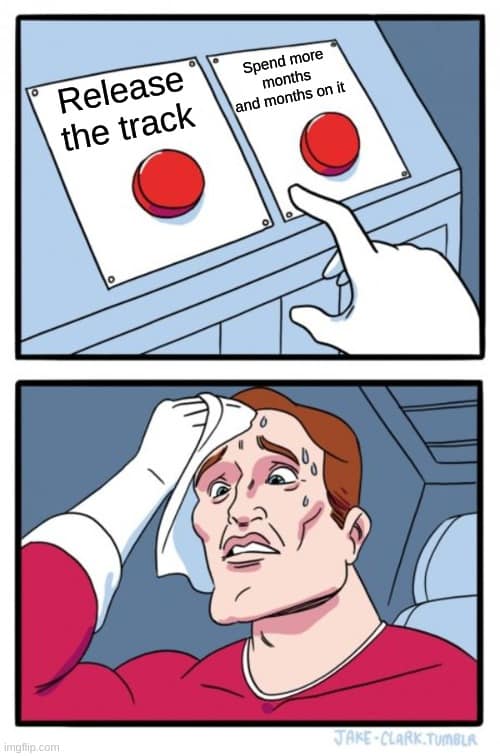
Finishing a lot of music as a lot of advantages:
- You grow your skills faster (finishing a track IS a skill)
- You’ll perfect and optimize your workflow
- You inevitably get more feedback on your music
- Quality eventually emerges from quantity 😉
If you truly want to get signed to a record label, you can’t just send one track every 6 months. You’ve got to be finishing a LOT of music. Good labels will often provide you with great feedback. If you show that you are persistent and keep sending them tracks, you’ll increase your chances of getting signed to a record label.
#4: Balance Labels and Self-Releases
Although I’m a big advocate of releasing with labels, I also see a lot of merit in self-releasing.
This is great in the fast-paced music industry, and it means you don’t have to rely on one label’s schedule for your music to come out, and you can take back control.
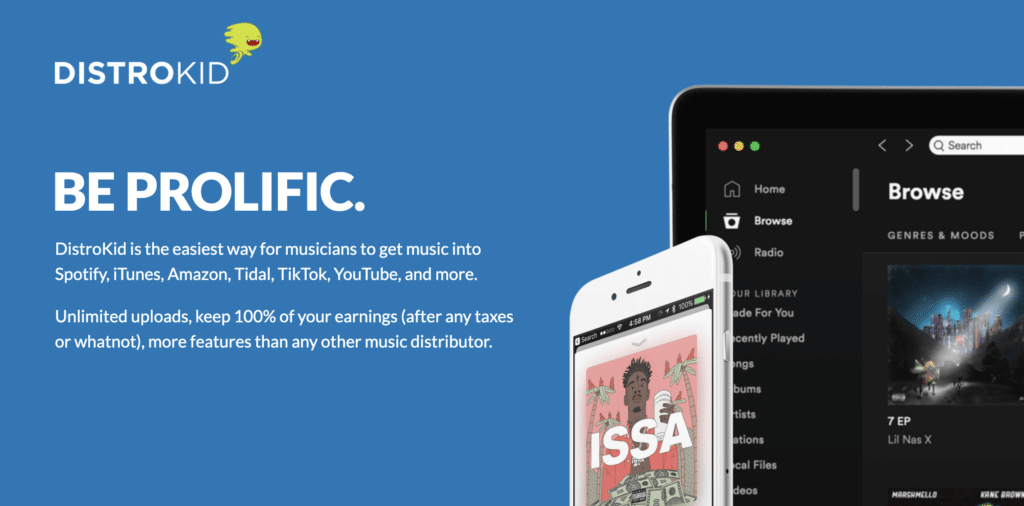
For example, if you have to wait 4 months for your next EP to come out on a record label, why not release a separate single or two before via self-releasing? This allows you to put out music more often, and engage with your fans.
#5: Why Not Start A Label?
I’ll probably write a guide on starting a record label at some point, but it’s worth considering.
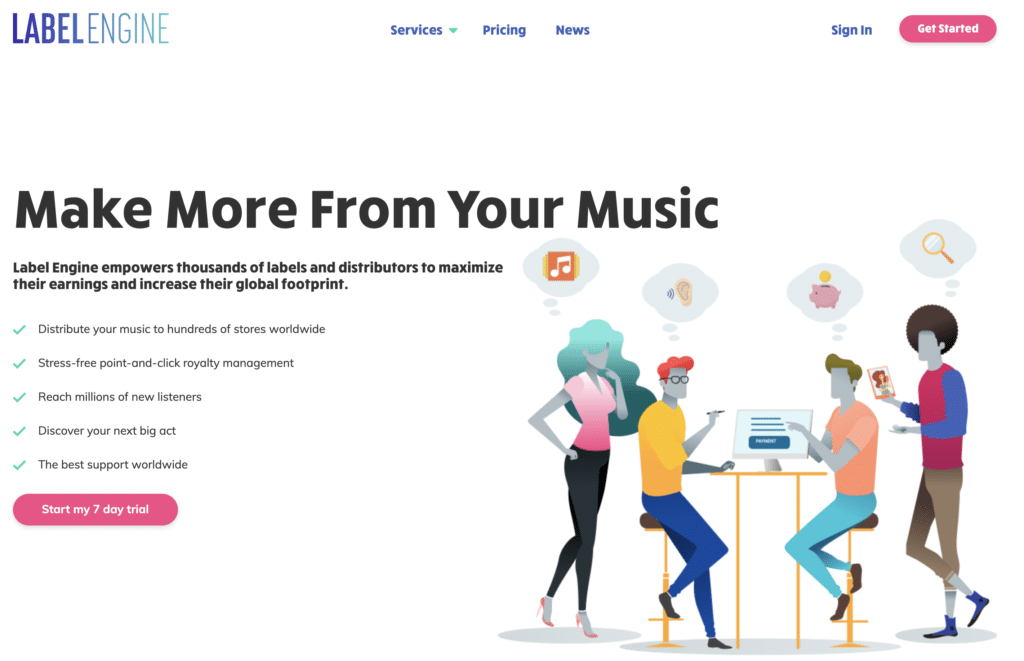
After years of self-releasing and releasing on others’ labels, I started a Drum & Bass record label called onesevenfour with some friends of mine, and it’s been an eye-opening experience into the world of running a label.
If you’re willing to do all the extra administrative work involved with running one, it can be a great secondary creative outlet that allows you to find new talent and push it out into the world. I’d recommend you get a decent amount of industry experience before doing this, though.
And that’s my guide on how to get signed to a record label! If you think I missed any crucial information, let me know over at [email protected].
New to music production? 🧑💻
Watch our Free Masterclass on how to learn electronic music production the smart way (without months of confusion & frustration) 👇

